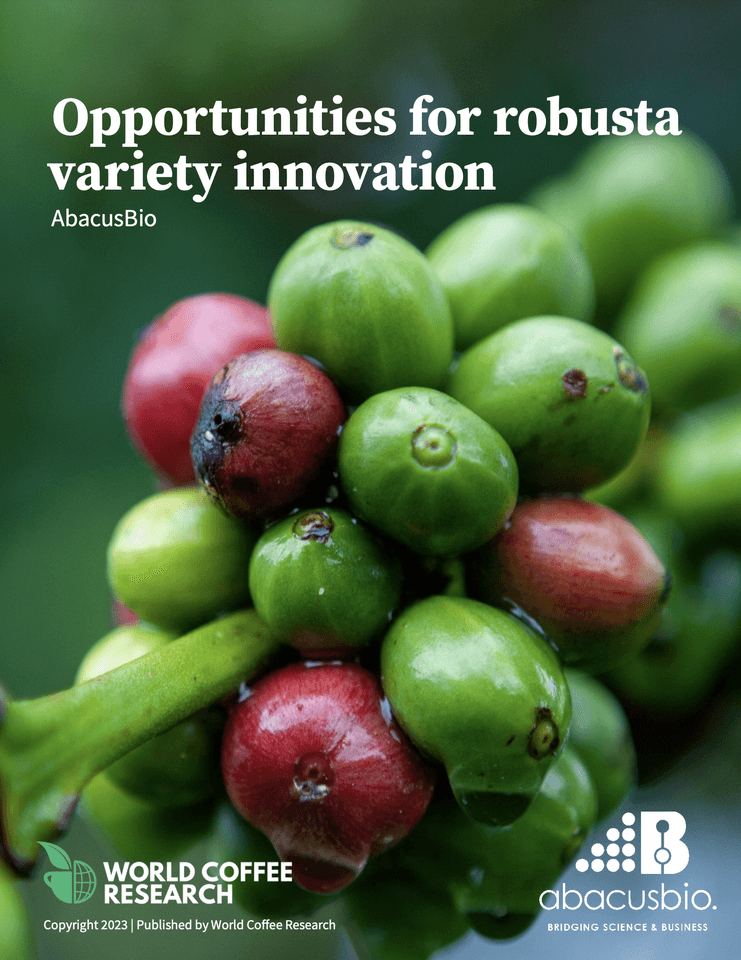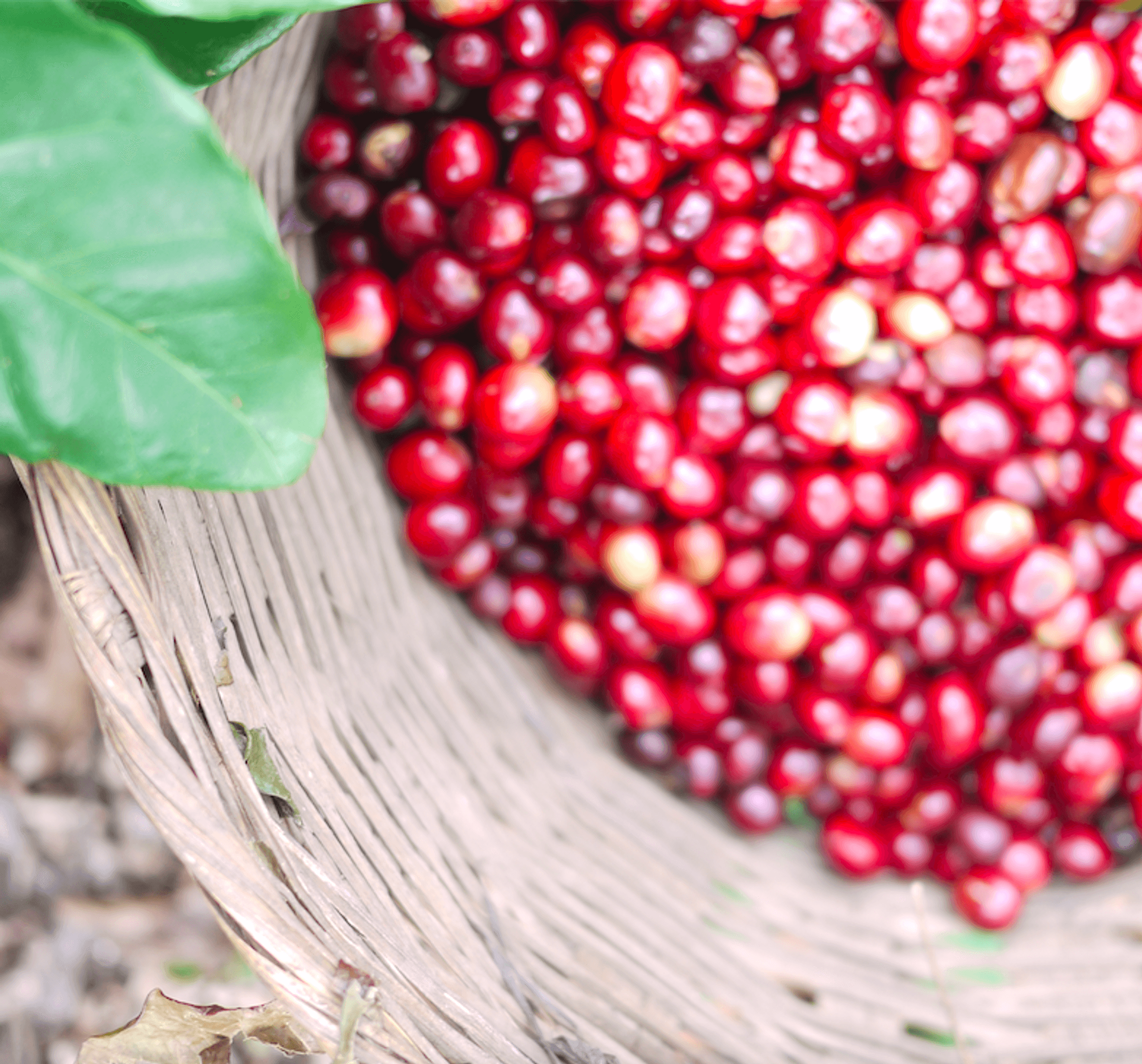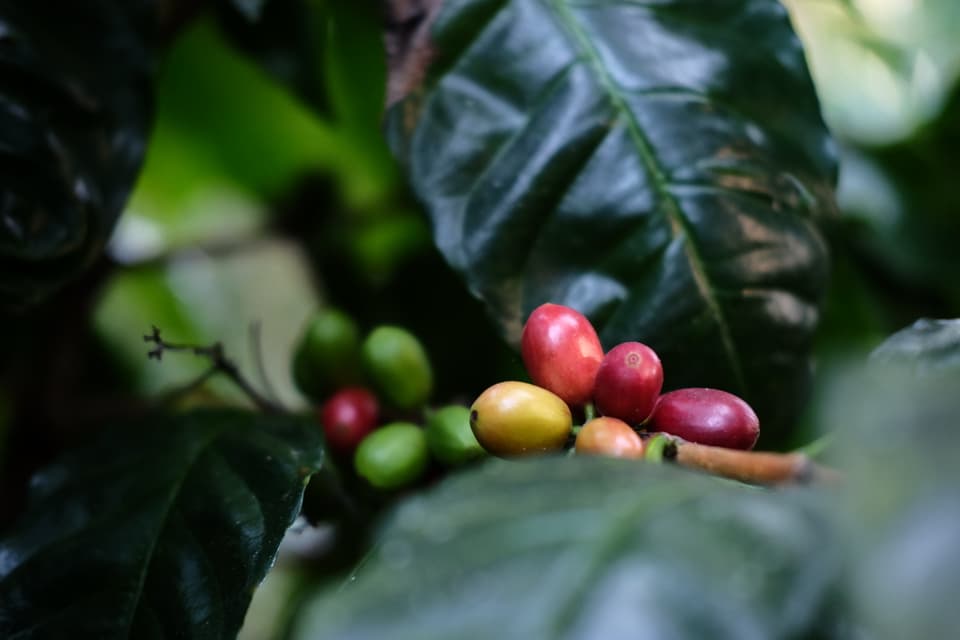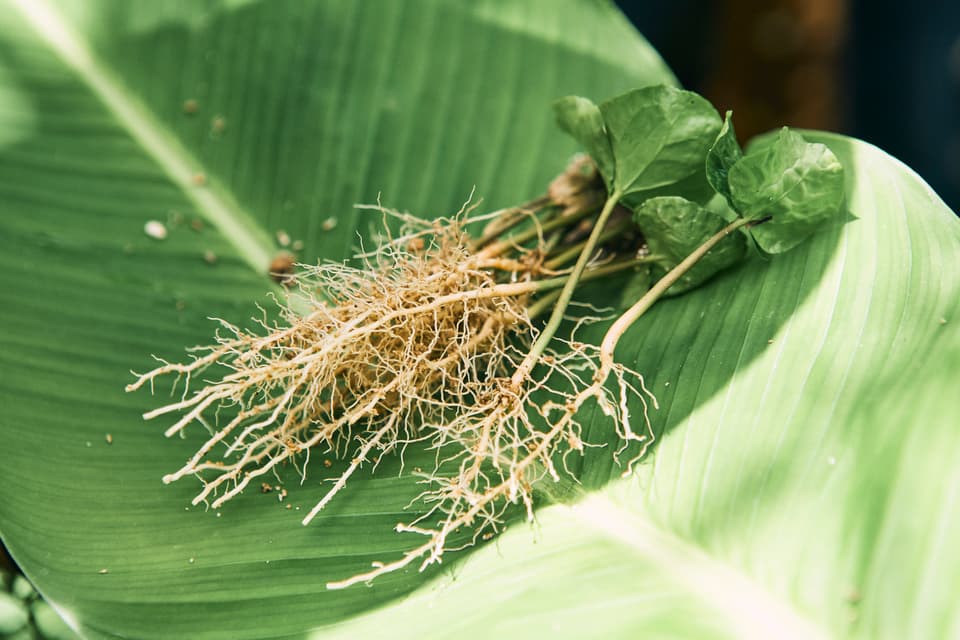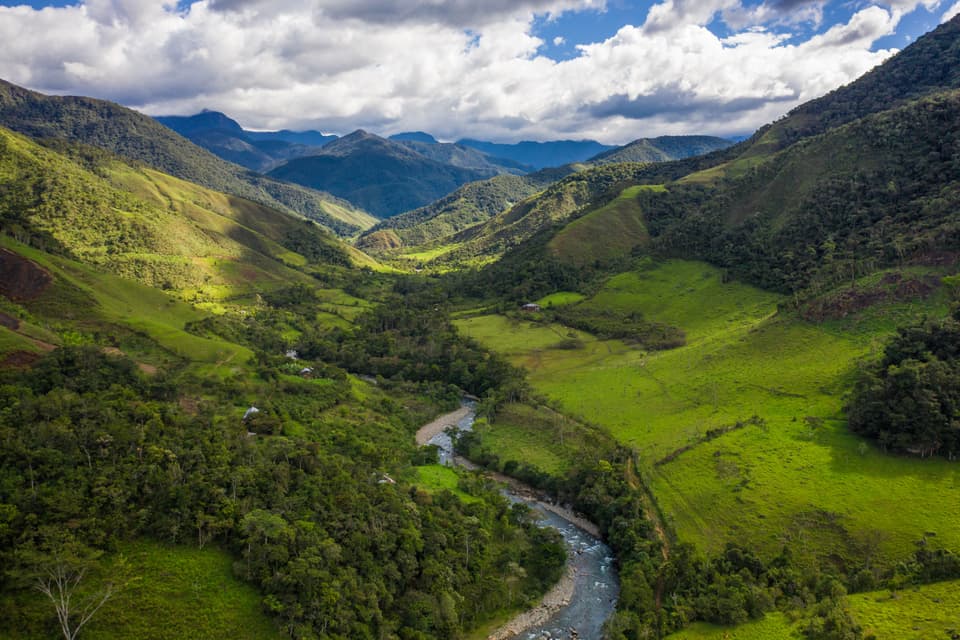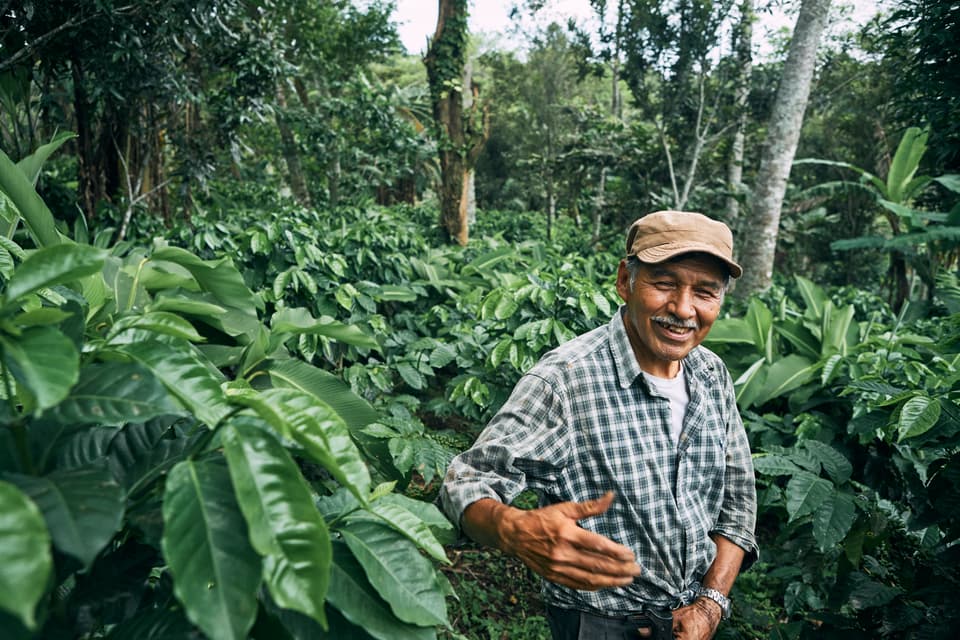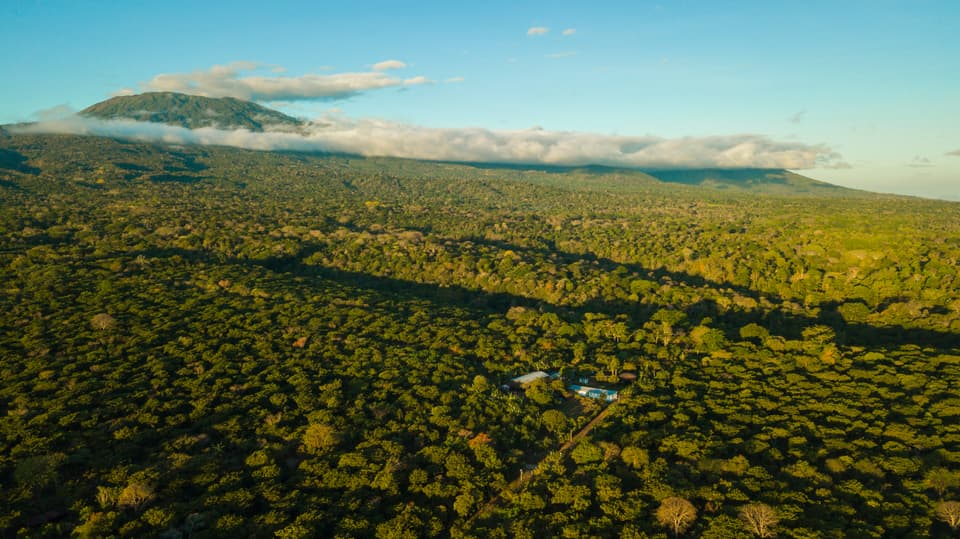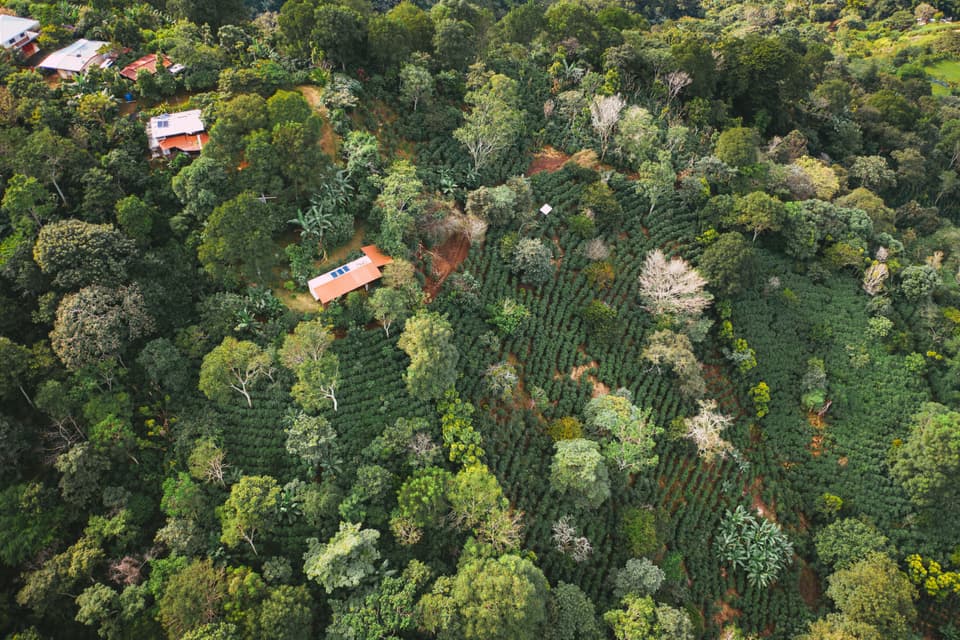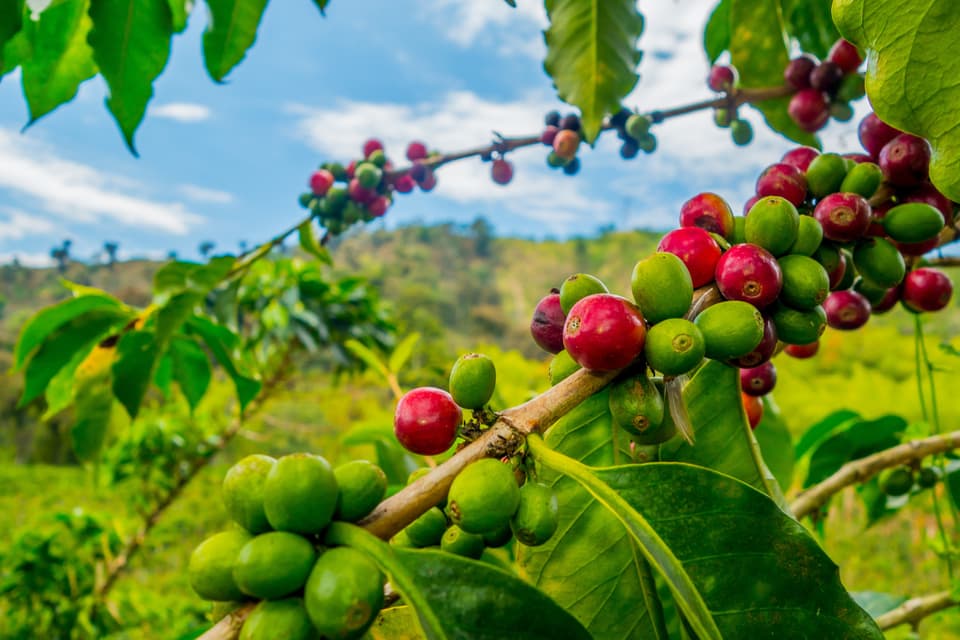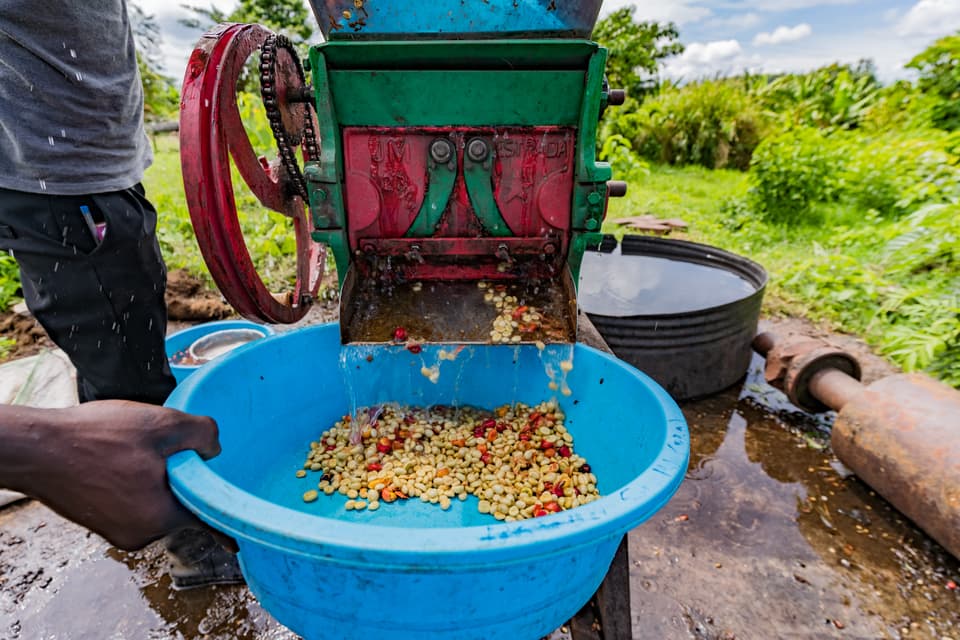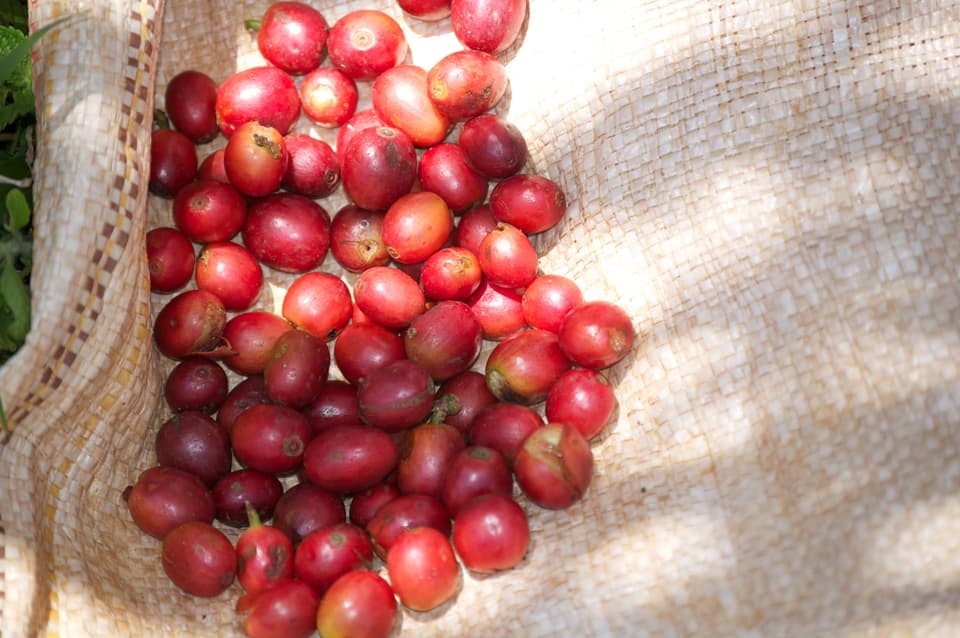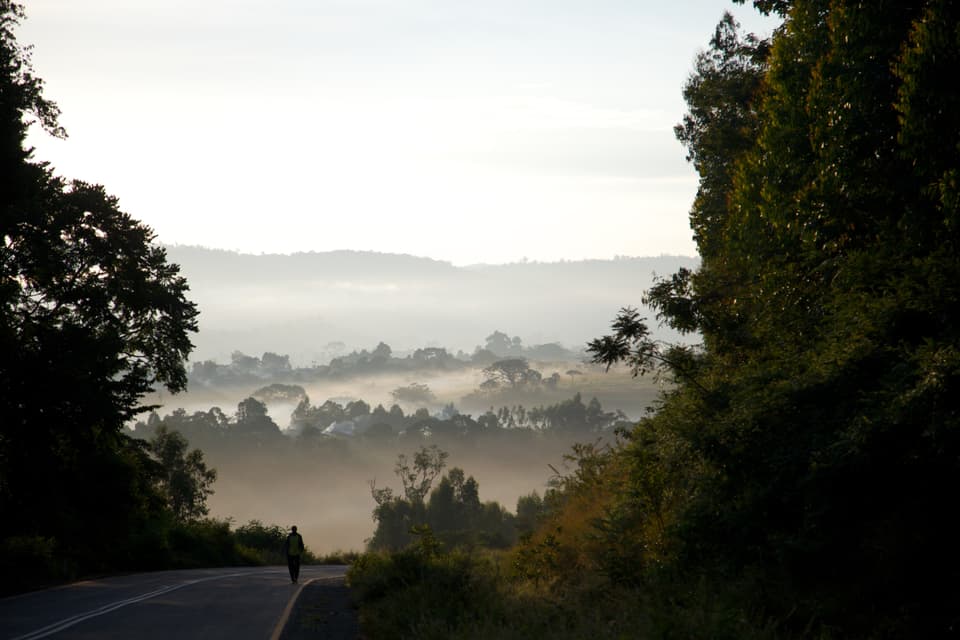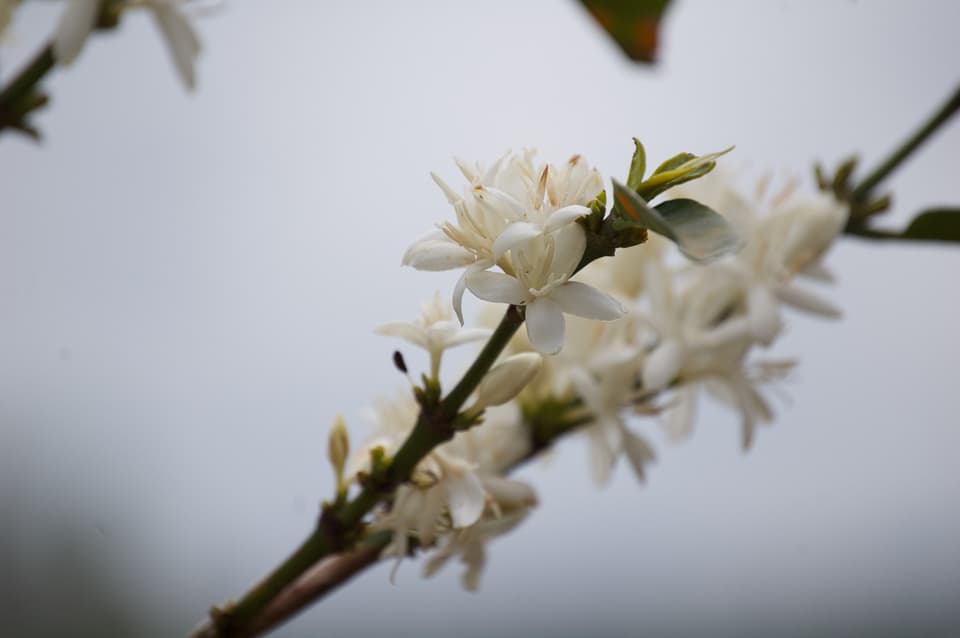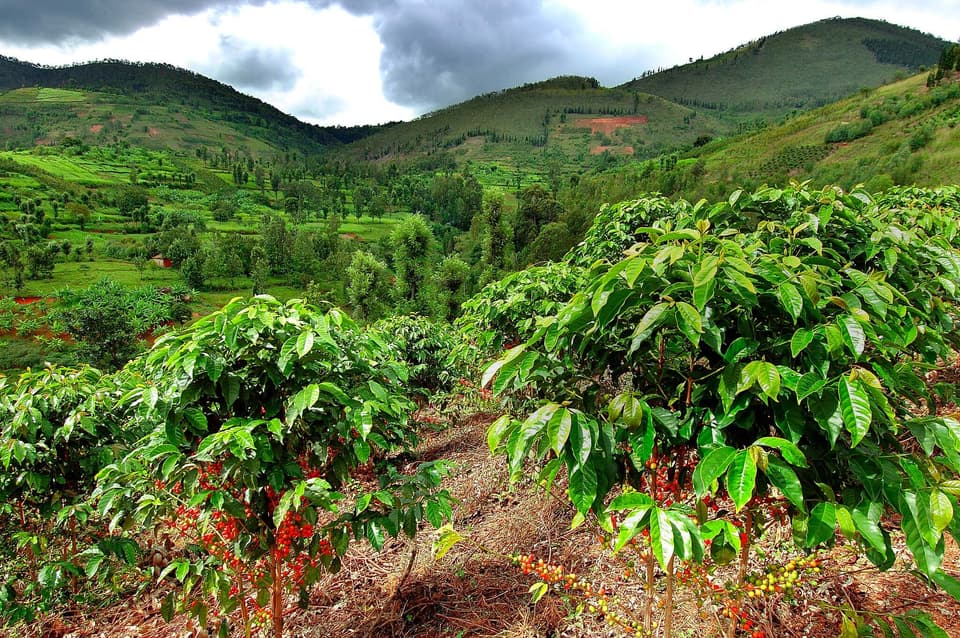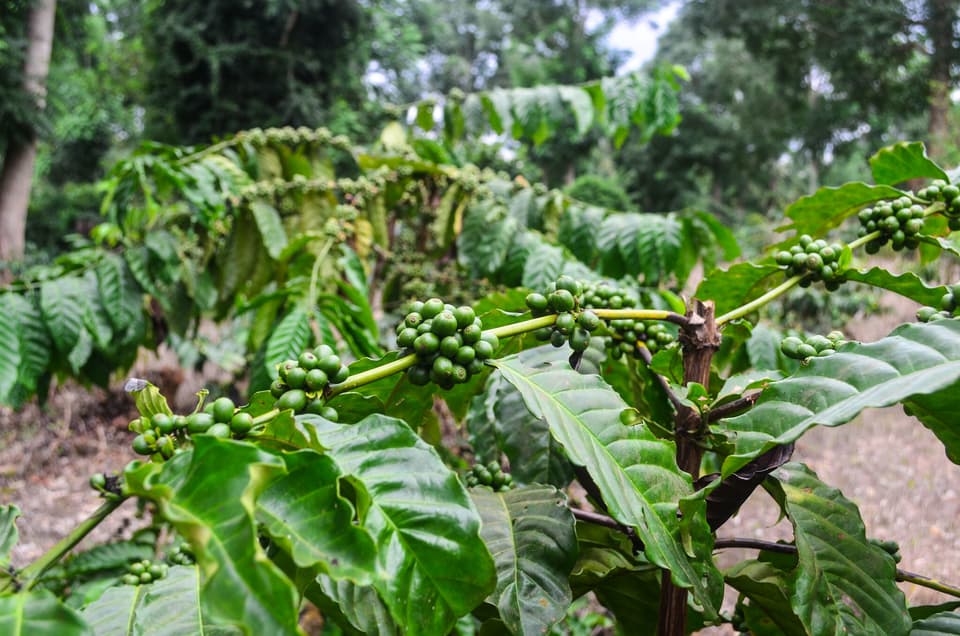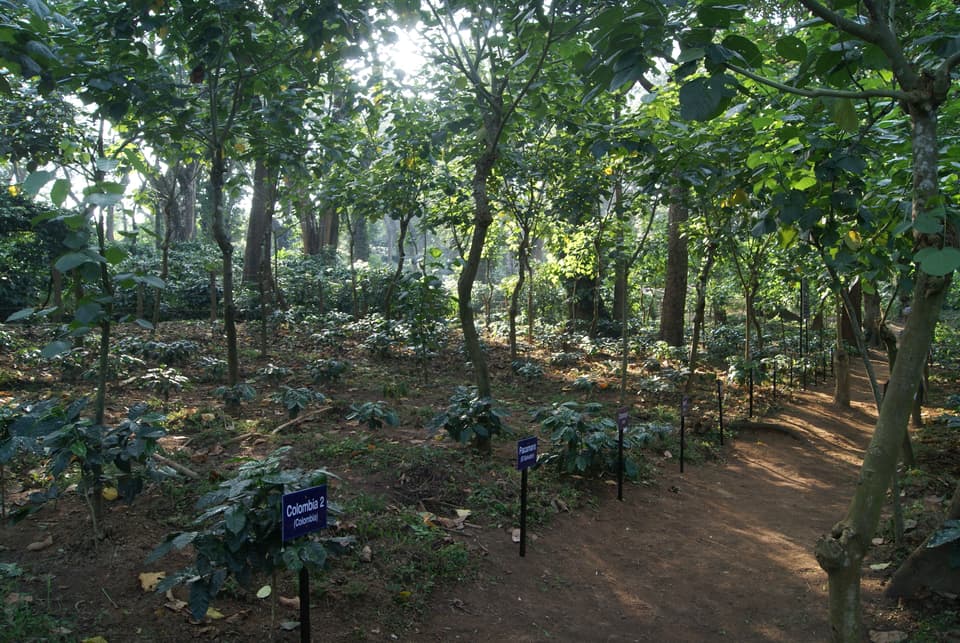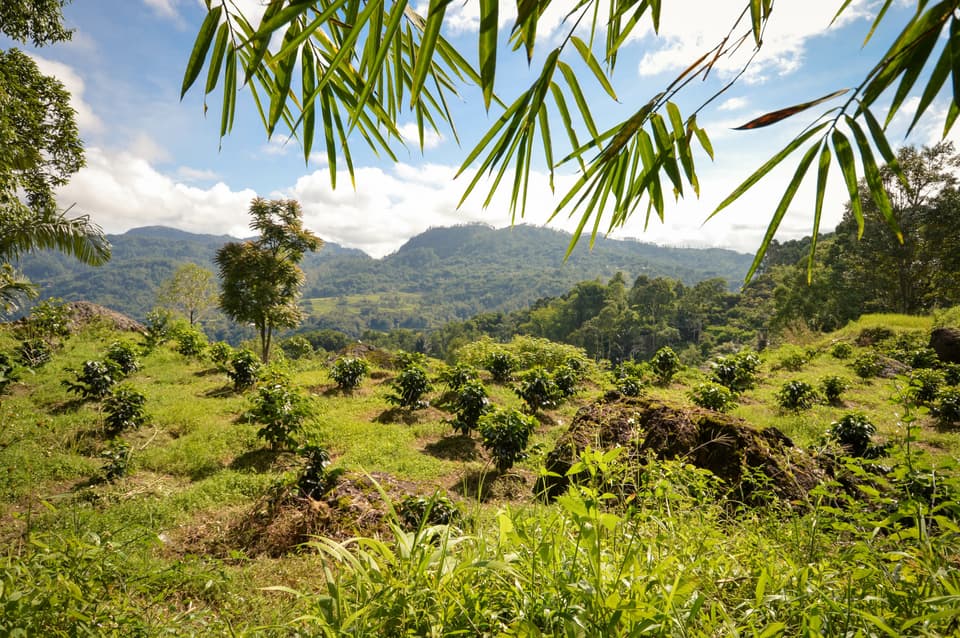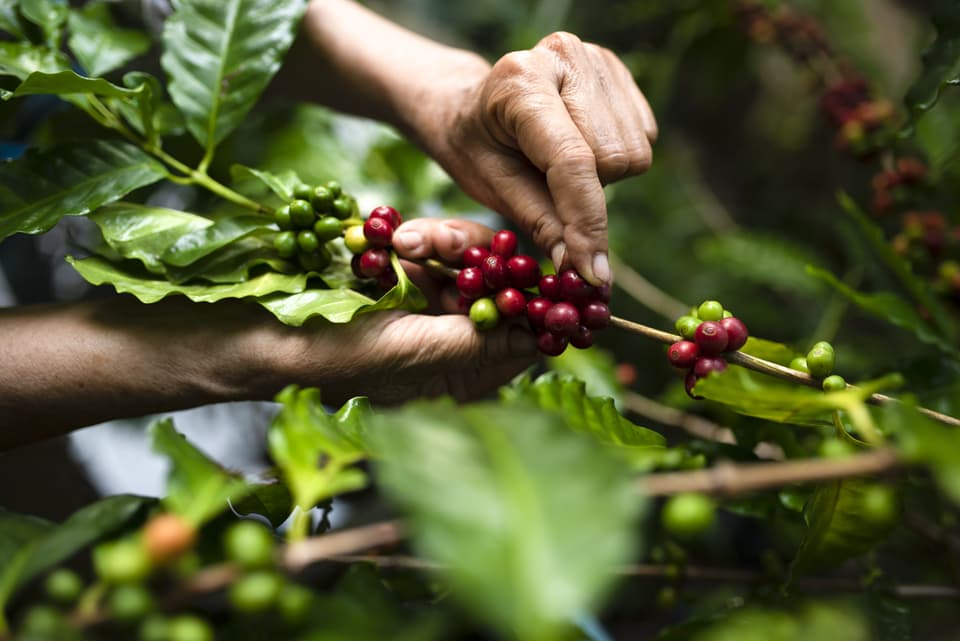Why breeding?
The problem
Climate, diseases, agronomic management, and consumer preferences have changed tremendously in the 200+ years since coffee emerged as one of the world’s most important commodity crops. And the production environments that farmers will be facing in thirty to fifty years from today will be dramatically different from the production environments of today. The challenges of coffee production are ever-evolving, and a failure to continuously address these threats facing will lead to continued struggle for farmers, further origin consolidation, a reduction in choices for buyers and consumers, and will have significant environmental consequences (e.g., continued deforestation, increased use of agrochemicals).
The solution
Plant breeding has transformed agriculture over the past 100 years. Examples of transformative innovations abound, from the creation of fruits and vegetables with longer shelf life (reducing food waste) and new quality and health attributes (reducing malnutrition rates), to plants that require fewer agrochemicals and produce more yield on less land (reducing carbon emissions, protecting forests). In short, breeding makes it possible to imagine the agricultural systems and end products we want to see in the future. Because climate change is speeding up the rate of change, there's a need to continuously develop varieties that can be productive and highly marketable.
With modern breeding approaches, not only can breeding programs attend to farmer-focused traits, they can also deliver tailored products for industry, creating value for both farmers and consumers.
WCR’s strategy
National coffee institutes conduct the lion’s share of agricultural R&D for the world’s coffee farmers, including breeding. Yet these programs often struggle to access the necessary resources and population sizes to accelerate genetic gain for their farmers, and to disseminate improved varieties once they have been developed.
WCR acts as a bridge between market demand (e.g., buyers and consumers of coffee) and national research programs in strategic coffee producing countries, supporting breeding programs to generate varieties that will thrive in the environments of tomorrow and that meet market demand.
By drawing on modern crop breeding approaches from other crops and working in collaboration with individual country breeding programs, WCR supports national breeding programs to create coffee varieties that meet the challenges of the 21st century. We enable national breeding programs to access novel germplasm, low-cost tools, and capacity building to develop varieties uniquely suited to their own national needs.
In particular, our approach to the challenges facing coffee breeding is as follows:
- We coordinate a global breeding network built on a “coopetiton” framework. We generate novel germplasm and distribute it to global partners for multi-environment testing, while developing genomic selection capacity to speed up genetic gain and continuously improve the breeding population. The germplasm generated from the breeding network will be shared openly as public goods.
- We support countries to evaluate and assess their breeding programs and to build roadmaps toward modernization. We also support these programs to seek investment to fund modernization.
- We bring tools and approaches with proven track records in other crops, including low-cost genotyping platforms and phenotyping tools and user-led design, to support coffee breeders around the world to achieve step-change modernization of coffee breeding programs to accelerate progress.
Varieties are the most efficient and economical way to significantly and sustainably increase productivity and quality. In coffee, this opportunity is greatly magnified because coffee is an ‘orphan’ crop and relatively little breeding or genetics work has been conducted relative to its economic importance.
In particular, crop varieties are an essential source of resilience against shocks and stresses, especially for lower-resource farmers. Improved varieties can allow farmers who are unable to implement other management options to consistently produce a crop. For example,in a severe leaf rust epidemic, a farmer who is unable to afford fungicide may lose all or most of their harvest for multiple years; but a farmer with disease resistant plants will survive the shock. It is particularly important for poor farmers to have high quality varieties, who may lack access to other means to improve their income from coffee.
And varieties can be transformative at scale—a good variety offers high yields and provides stable performance in many production areas, and thus can be rolled out across entire regions.
Unfortunately yes. Coffee is a tree crop with a long breeding cycle and has not taken advantage of agricultural innovations that have been transformative for other crops.
Current investment in coffee breeding and current approaches and methods for breeding for most origins are profoundly inadequate and short term given the climate crisis. Smaller countries and those with lower national income from coffee struggle in particular. Most national coffee breeding programs lack many of the features of a high-performing modern breeding program, such as large population sizes, novel variation, clear product profiles, and use of genomic tools, thereby impairing their ability to develop and deliver new varieties given the significant challenges posed by the climate crisis. National breeders are forced to implement short term projects because of the lack of a consistent breeding budget required in developing long-term breeding strategies.
The tools, technology and breeding strategies needed to address this challenge have been developed and successfully deployed in other crops, which are far ahead of coffee in anticipating climate and supply risk challenges. Other crops have already invented the tools that coffee needs, which means coffee will need to spend far less money on these investments to achieve the same benefit. Tremendous genetic gains can be achieved with existing coffee germplasm if modern breeding approaches are brought into coffee. These advances allow modern researchers to leapfrog over decades of underinvestment in coffee breeding.
You can read more about the $452 million USD investment gap in coffee agricultural R&D in WCR's 2023 white paper, "Coffee's Innovation Crisis" based on an analysis by economist Dr. Mywish K. Maredia. 2
A proverb tells us: The best time to plant a tree was 20 years ago. The second-best time is today. The same can be said of breeding new trees. Tree crop breeding is a long-term investment—it takes anywhere from 25-35 years for a new pure-line coffee variety to be ready for commercial release to farmers, and longer than that for widespread adoption to occur. And new varieties are not a stand-alone solution—the ideal is to co-develop varieties that are optimized for changing production environments and evolving agronomic practices.
For a global organization like WCR, variety development is resoundingly the most strategic investment. Ensuring sustained supply of diverse, high quality coffees in the medium-to-long term requires the continual creation of new coffee varieties.
Most producing countries face challenging trade-offs between short/medium term and long term investments to support farmers. Given the low productivity of coffee production in most places, coffee institutes are necessarily focused on short-and medium term innovations to drive productivity improvements, such as nutrient and pest management approaches and technologies, best practices for biodiverse/agroforestry systems, irrigation, etc.
These research topics are critical and it’s highly appropriate for national research institutions to lead such efforts, given that agronomic management is localized and recommendations on optimized interventions will necessarily be more tailored to regions within a country. In the coming decades, these efforts will support the optimization of agronomic management in many origins. But because variety development is a 10-30 year process, it is urgent that coffee producing countries build stronger breeding pipelines now to assure their future competitiveness and sustainability. WCR supports public breeding programs to build stronger pipelines of new varieties that are tailored for local demand—and optimized for local agronomic conditions—through a Coopetition model.
The generation and dissemination of new technologies [is the most important driver of productivity growth], which requires stepping up national research efforts. Yet, in many of the poorest nations, a serious research spending gap has emerged precisely at the time when the challenges faced by agriculture are intensifying.” —Harvesting Prosperity1
In 2022, as a response to member company input that reflected an increasing interest in robusta, WCR initiated a study of the potential for breeding to support the industry’s robusta needs. In October 2023, WCR published the results of this study in a white paper focused on trends for future robusta supply and demand, as well as existing resources given to robusta genetic improvement, in order to examine possible roles for a collaborative, global robusta breeding program.
